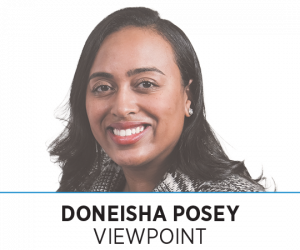Subscriber Benefit
As a subscriber you can listen to articles at work, in the car, or while you work out. Subscribe Now The recent U.S. Supreme Court decision to strike down affirmative action in college admissions has ignited discussions about the future of diversity in higher education. As we contemplate the implications of this decision, the imperative remains: Higher education institutions should be beacons of inclusion, shaping a generation prepared to tackle complex global challenges.
The recent U.S. Supreme Court decision to strike down affirmative action in college admissions has ignited discussions about the future of diversity in higher education. As we contemplate the implications of this decision, the imperative remains: Higher education institutions should be beacons of inclusion, shaping a generation prepared to tackle complex global challenges.
The repercussions of this decision are not merely theoretical. They are felt deeply in states like California and Florida, where race-conscious admissions were banned years ago. The University of California serves as a poignant example, where enrollment numbers took a drastic decline in 1996 following a statewide ban on affirmative action. Within two years, Black and Hispanic enrollments dropped by half at the system’s two most selective campuses, Berkeley and UCLA.
The present landscape reflects Hispanic students making up about 20% of undergraduates at these institutions, compared with their 53% representation among California high school graduates. Black students now constitute just 2% of Berkeley’s undergraduates, exposing the ongoing struggle for equitable education access.
The Supreme Court’s decision underscores the urgency for colleges and universities to double down on their commitment to diversity. Colleges play a pivotal role in shaping our society’s future, and their student bodies should mirror this responsibility. A diverse student body contributes to a broader perspective, richer discussions and a better-prepared workforce to tackle the challenges of a diverse world. This is not a matter of preference but a necessity for institutions to fulfill their broader societal purpose.
Here are three actionable strategies for institutions to ensure a diverse student body and uphold their mission.
Holistic admissions processes: It’s time for colleges to look beyond test scores and GPAs as primary admissions criteria. Holistic admissions consider the full range of an applicant’s experiences, highlighting resilience, growth and unique viewpoints. This approach doesn’t just open doors for underrepresented students; it taps into a mosaic of talents that enrich academic communities. UC Davis School of Medicine’s class of 2026 is the most diverse in America, next to Howard (a historically Black university) and Florida International (which primarily serves the Hispanic community). This achievement was made by focusing on holistic admission policies.
Strengthening outreach and recruitment programs: Diversity efforts should begin well before application deadlines. Colleges need to proactively engage with communities historically underrepresented in higher education. Outreach programs empower students with knowledge about the transformative potential of a college degree or certification, breaking down access barriers and fostering inclusivity.
Comprehensive support services: To ensure that a diverse student body thrives, colleges must provide robust support systems. From mentorship programs to counseling services to child care on campus, these resources help navigate the unique challenges marginalized students might encounter. This safety net doesn’t just contribute to academic success; it nurtures a sense of belonging, vital for persistence, personal growth and societal impact.
While the Supreme Court’s decision marks a new chapter, it doesn’t rewrite the ultimate purpose of higher education. Colleges and universities have the power to shape a generation with empathy, cultural intelligence and a readiness for change. A diverse student body doesn’t just enrich campuses; it equips all students to thrive in a globalized world and contribute positively to the challenges of the 21st century.
Higher education’s mission extends beyond textbooks—it’s about cultivating a brighter, more inclusive tomorrow.•
__________
Posey is vice president and general counsel at Black Onyx Management.
Please enable JavaScript to view this content.
